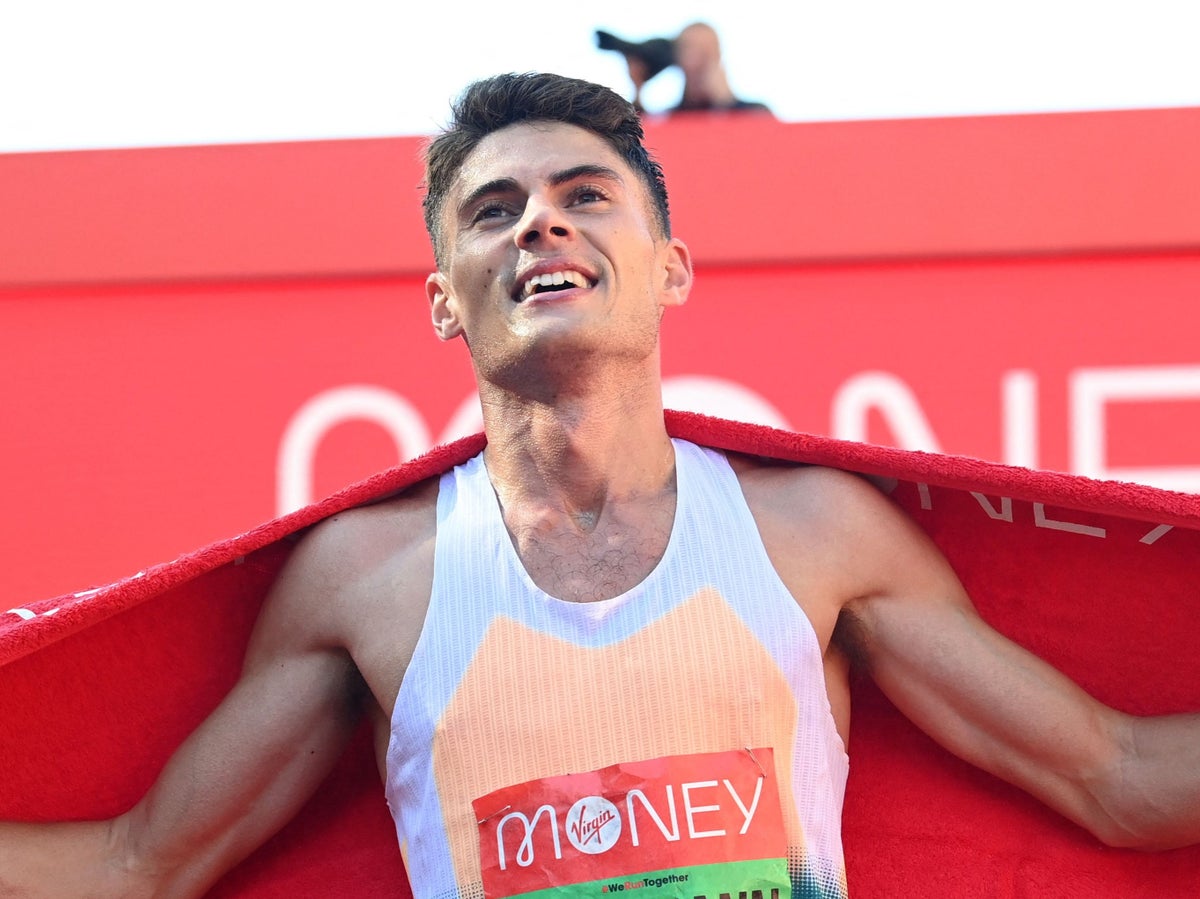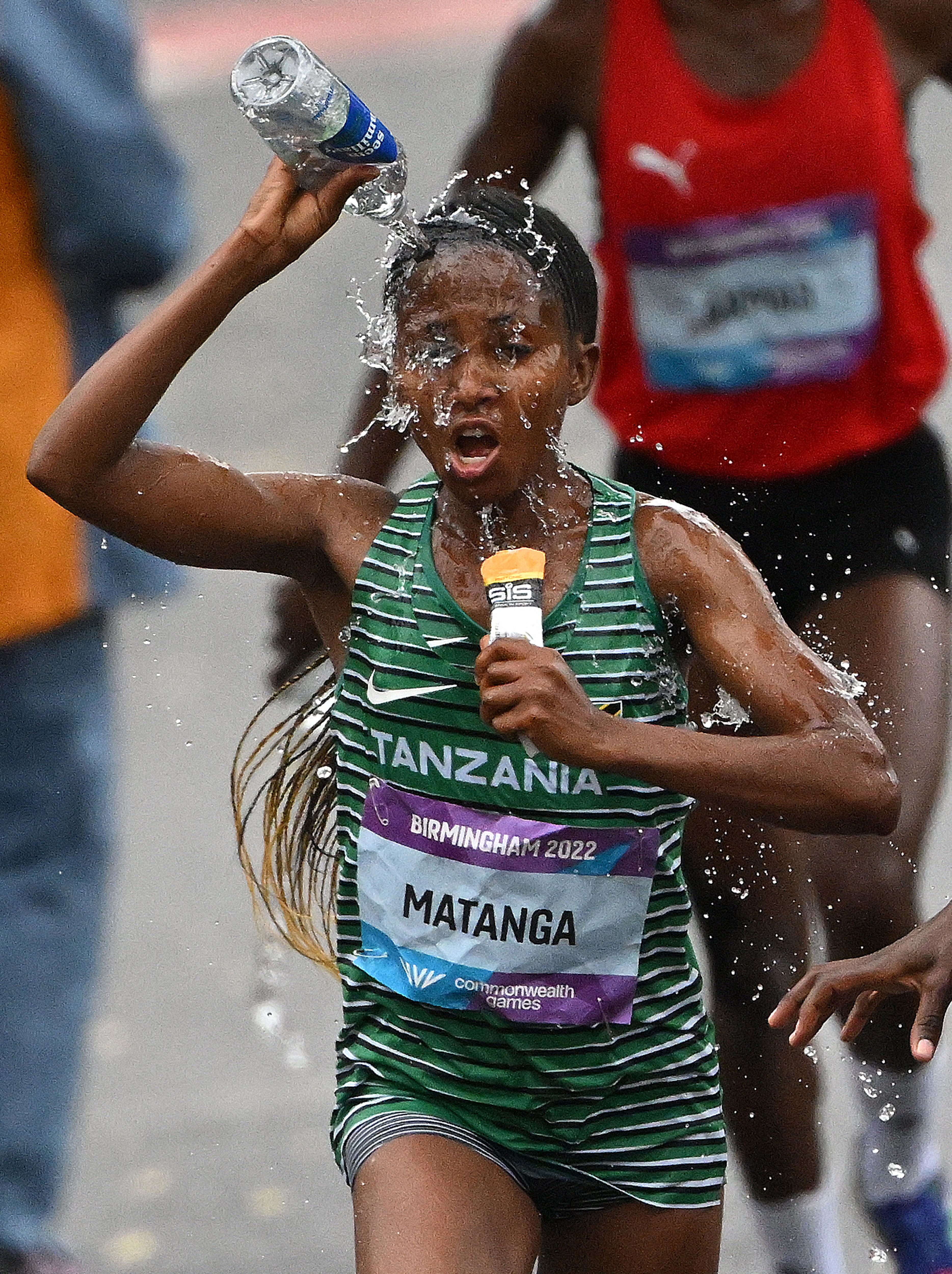
As England endures another heatwave, there has been a peculiar sight along the canal path that connects Leeds to Liverpool in recent weeks. Phil Sesemann has been routinely skipping along while completely covered in a long-sleeved tracksuit, hoodie and hat.
But it is this arduous training in such sweltering conditions that has formed a key piece to the puzzle that is marathon training and a shot at glory in the European Championships on Monday.
Blazing times are usually associated when the world’s best runners tackle 26.2 miles in Germany, with Eliud Kipchoge producing his world record (2:01:39) in Berlin four years ago. But blurring leg speed is unlikely to be the deciding factor in Munich in the middle of August. Instead, the medals look to be decided by fierce competition, resilience and who has conjured up and executed the perfect strategy.
Sesemann, the first Briton across the line at the London Marathon last year on debut in 2:12:58, takes on his second career marathon. A late bloomer to the distance and as a professional in the sport, the NHS doctor, 29, is now relishing the opportunity to compete as a full-time athlete. With no stone left unturned on the road to Munich, there will be a whirlwind seven-week turnaround before racing the TCS London Marathon.
“Training has gone well, my fitness is good, so too is fuelling and I’m not carrying any niggles,” Sesemann explains when assessing his chances, before admitting there is some “anxiety” at approaching those chaotic aid stations mid-race.
“If things go my way, I don’t know where I could finish, I could be right up there challenging at the front end, that’s how I look at it. Enjoy the race side of it, which at other marathons, I was targeting a time, this time time is irrelevant, it’s about position.
“I definitely want to be the first Brit, but it’s a team event. I’ll see who’s looking good, follow them, follow moves. So unless somebody does something crazy, I’ll try to get to the front and be there as long as possible.
“Competition is the goal. I’d rather win in 2:20, than finish 10th in 2:10, or even second in 2:10. It’s going to be a strong field, there are guys, top European marathon runners, looking at Munich as the goal of the year. The quality will be high.
“Being involved near the front will be where I get the most out of myself psychologically. It’s risky to sit off and wait for people to drop off, you can pick up and get into a high position, but if you want to see what you’re really capable of, you’ve got to put it on the line and take a risk or two.”
Sesemann will pull on a Great Britain vest for a third time, alongside a six-strong men’s team, which also includes Mohamud Aadan, Luke Caldwell, Ben Connor, Andrew Davies and Andrew Heyes. Representing his country at a major championship was one of Sesemann’s two career goals written down many years ago. The second, to break Chris McGeorge’s Blackheath and Bromley 1,500m record (3:39.41) might be out of reach now, with his best (3:40.93) set four years ago.

Instead, Sesemann has found joy racing a distance more than 28 times longer, embracing the psychological test as much as the physical toll he puts his body through. He knows his ambition will leave him vulnerable when enduring temperatures expected to exceed 25C, but there is excitement after completing a carefully-devised plan with coach Andrew Henderson. From a month at altitude in the idyllic French town of Font Romeu to the grind of running inside a heat chamber at Leeds Beckett University or around Yorkshire in multiple layers, this has not been an ordinary marathon block.
“The training takes a lot out of you and it’s an added stress on the body,” Sesemann explains. “We did a round of testing before Font Romeu, where I took thermometer gastrointestinal pills to track my core body temperature during sessions where there was big heat exposure.
“Then we did testing when I got back and designed the training protocol. I’ve done one run per week in the heat chamber on the treadmill. We’ve got that up to 40C. And on Wednesday I did a run, then jumped into a cryospa, a hot bath. We’re measuring heart rate and temperature constantly, the pre-exposure and post-exposure rate to calculate sweat rate.
“But without the access, I do layered runs with lots of clothes on, it’s just as horrible as it looks and it’s a real strain.”
Recovery is obviously crucial, with Sesemann routinely losing as much as 3kg of water in sweat per hour – in comparison to Formula 1, Lewis Hamilton usually loses 5kg across a 90-minute Grand Prix.
There is a comforting aspect shared among both amateur and elite runners: chocolate milk. It has proven to be Sesemann’s secret ingredient, consuming “litres of the stuff” across torturous 120-mile training weeks.
But with just days remaining, there is now real optimism, with Sesemann, who will race in the Adidas Adios Pro 3 shoes, enjoying remarkable numbers over recent weeks. He recalls a 20x1km session at altitude, run as 1km on, 1km off, which returned average splits of 3:22 and 3:02.9 while holding back. The same session two weeks later back in Leeds then produced approximately 3:14 and 2:53. Another confidence boost quickly arrived when tackling 4x4 miles with one mile float along that familiar cycle path while averaging 4:58 per mile for the entire run.
Monday’s result will largely dictate the effectiveness of what has been an unorthodox period of both training and life in general for Sesemann, which has included sleeping inside an altitude tent each night. But the meticulous approach leaves him content and poised to discover what he is capable of.
“The response has been really good,” Sesemann concludes. “We had a 50 per cent increase in sweat rate in just one week which is really good exposure and has left me as well prepared as possible for Munich. You need to find a balance and not flog yourself with the added stress while training for a marathon. But hopefully we’ve got it right.”







